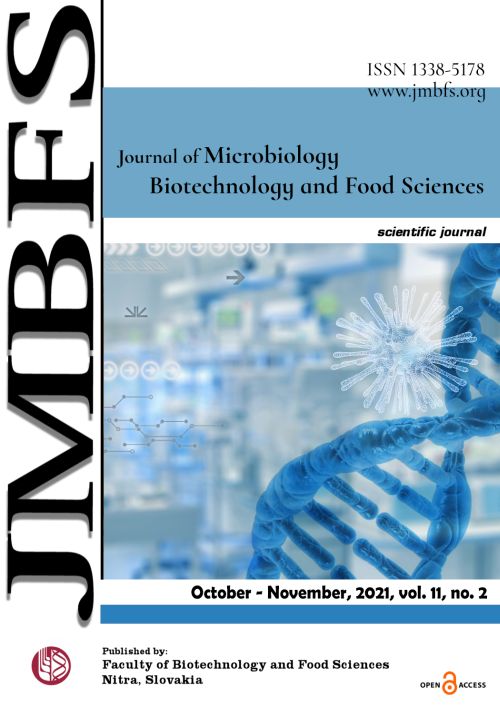STATISTICAL OPTIMIZATION OF ALKALINE LIPASE PRODUCTION BY EXTREME HALOPHILIC ARCHEAN NATRIALBA ASIATICA
DOI:
https://doi.org/10.15414/jmbfs.1164Keywords:
Lipase, Natrialba asiatica, Plackett–Burman Design, Response Surface Methodology, Extreme halophilic archaeaAbstract
In this study, extreme halophilic archean Natrialba asiatica was utilized as a new source for lipase production. Lipases from halophilic archaea are appealing for utilization in assorted industrial and biotechnological applications. The optimum temperature and pH of N. asiatica lipase in the crude mixture were 50 °C and 10, respectively. The growth conditions influencing lipase production were determined using a two-level fractional factorial Plackett–Burman design. Among the 9 factors screened, MgCl2 concentration, temperature, and shaking were found to be effective. The optimum levels of these factors for the production process were determined by employing the central composite design of response surface methodology. The 27 g L-1 of MgCl2, 50 °C, and 133 rpm were determined as optimized conditions for lipase production. The enzyme activity increased from 3.39 to 6.1 U mL-1 using predicted optimum levels. These findings help understanding factors affecting the production of lipase by halo-archean N. asiatica. Moreover, using the optimized level of temperature, shaking, and MgCl2, it is possible to increase the production of valuable alkaline lipase by N. asiatica.
Downloads
Downloads
Published
How to Cite
Issue
Section
License
Copyright (c) 2021 Maryam Pirghorbani, Mehdi Ebrahimi

This work is licensed under a Creative Commons Attribution 4.0 International License.
All papers published in the Journal of Microbiology, Biotechnology and Food Sciences are published under a CC-BY licence (CC-BY 4.0). Published materials can be shared (copy and redistribute the material in any medium or format) and adapted (remix, transform, and build upon the material for any purpose, even commercially) with specifying the author(s).





